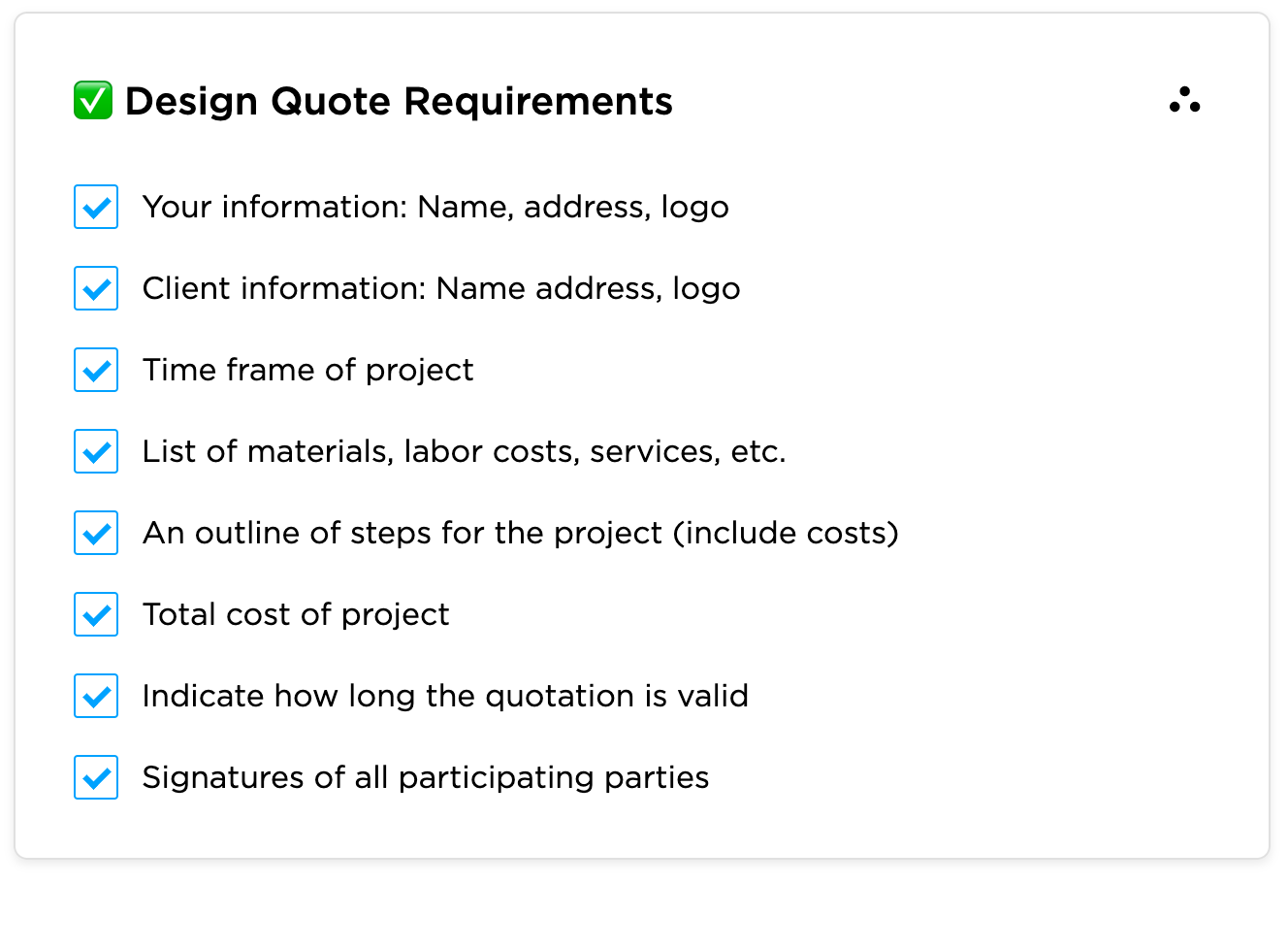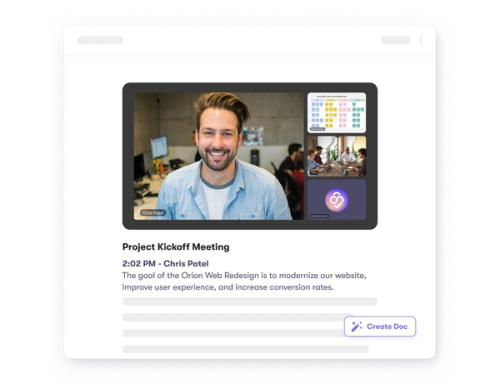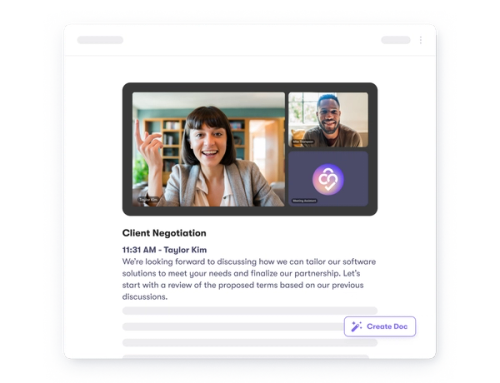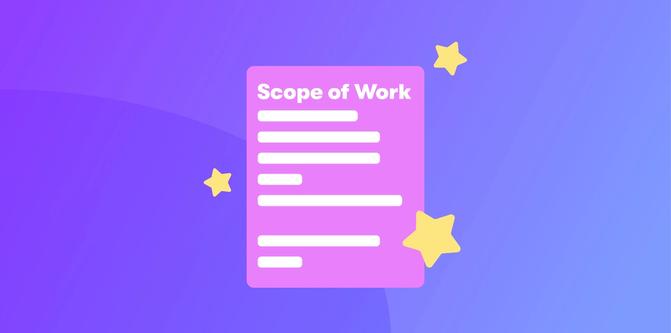Project Quoting: The Right Way to Do It

How to quote your projects
The time has come to provide your client with a quote for the upcoming project. Collato has collected all the most important information for you to write a project quote, everything from the two types of payment to common mistakes.
Here’s the tea: 🫖
The two ways to quote a design project
Just like any other quote, a project quote is an estimation of your services. It’s typically included in your proposal, a document that outlines your intentions for a project, but in many cases a second quote is drafted and signed once you've landed the client.
Creatives in bigger agencies might not have to worry about giving a quote at all, that's the job of the company. However, smaller firms and freelancers are usually responsible for quoting their own design projects.
Every creative has their own way of quoting a design project, but there are two popular methods; by hour and by project. Whichever way you decide is up to you, but we’re going to cover both options.
1. Quoting by the hour
Quoting by the hour means that you estimate the amount of working hours you’ll spend on a project, then charge X amount of euros for that time.
An hourly rate is a super common and straightforward method of charging for a design project. Some creatives charge a flat hourly rate for all assignments and others prefer a different rate for different services. For example, maybe designing a website costs per hour than conducting user research, etc.
The benefits of quoting by the hour:
- More security to your business, especially if your customer doesn’t provide an overall budget.
- Easier to calculate, especially for smaller projects
- Some clients see it as a more transparent way of doing business
Although quoting by the hour has its advantages, it also has some drawbacks:
- If a project takes longer than you expected, then the client might be upset that the project was more expensive than the original quote.
- A customer might not understand your value and choose another designer due to lower rates
- A client might scratch some design ideas to lower the price
2. Quoting by the project
Quoting by a project means that you charge a fixed price for your project. This price already takes into consideration your skills, amount of hours, required materials, the number of design revisions, etc.
The benefits of quoting by the project:
- It is a predictable method for customers because they know exactly how much the project will cost.
- Quoting by project encourages you to work in an efficient and productive manner because you know the set budget and time restrictions.
While many creatives choose to charge by the project, there are some disadvantages as well:
- You need to accurately estimate the costs of your project to make sure it is worth your time. This includes milestone deliverables, design amends, special materials or software programs, everything.
- Staying on budget becomes more important because there isn't much flexibility in the contact.
- A client might not understand your system of pricing, leading to payment confusion.
Design Quote Checklist
Now that you’ve weighed your options regarding the two ways to quote a project, it’s time to write your own. Check off these seven requirements to make your quote clear and precise

Top 3 mistakes when writing a design quote
Juggling both business and design is really tough. In addition to design talent, a creative has to have outstanding organizational and business development skills. But at times it can be really tricky to master it all. When you’re preparing your project quote, try and avoid these common mistakes.
1. Poor communication of additional costs
We’ve all heard it before, communication is key - especially in the workplace. Ineffective communication in a design project can lead to misunderstandings, missed opportunities, conflict, and low morale, both within your team and with clients. That’s why it’s crucial to always be clear, straightforward, and upfront about the costs associated with a design project.
Make sure you communicate any additional costs that might arise during the project, such as outside labor, specific software plug-ins, new website domains, etc. It’s important for clients to be aware of such possibilities so everyone is on the same page right from the start.
2. Ambiguous agreements
Another common mistake that goes hand-in-hand with poor communication is ambiguous agreements.
How many design revisions are included in the project’s price? What is your payment agreement? Do you require compensation at the beginning of a project phase? When are deposits due?
Questions like these are important to answer from the get-go because it decreases any chances of falling to those symptoms of poor communication that we talked about earlier.
3. No signed contract
Never dive into a project without a contract. Never. Never.
You are a skilled professional that creates valuable work, so don’t let it be taken advantage of! This isn’t to say that clients are out to swindle you, it just means that you will be fairly compensated for your time, effort, and expertise on a project. So going into a new project, whether that be with long-standing customers or new clients, with a contract is crucial. Fingers crossed that nothing goes amiss, but if it does, a contract will insure payment for completed work.
Project quotes with Collato
Drafting project quotes can be a time-consuming process, especially when recalling the specifics of a client meeting. Collato steps in to be your project quote hero. By attending transcribing your meetings, Collato provides a digital footprint of the entire discussion. This eliminates the need to rely on memory or scattered notes. With the transcript in hand, you can easily reference key points like project scope, deliverables, and timelines. Collato's AI can even extract important details, allowing you to quickly draft a quote that accurately reflects the agreed-upon terms. This not only saves you valuable time but also ensures your quote aligns perfectly with the client's expectations, leading to smoother project transitions and happier clients.






